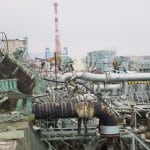The Nuclear Energy Institute (NEI) last week detailed its “FLEX” response strategy, a program that calls for more safety and emergency response equipment at each of the nation’s 104 commercial nuclear reactors. According to the trade industry group, “The initiative commits every U.S. company operating a nuclear energy facility to order or enter into contract for a plant-specific list of emergency equipment by March 31.”
NEI said FLEX is a strategy developed by the nuclear energy industry to implement the Nuclear Regulatory Commission’s (NRC’s) Fukushima task force recommendations quickly. It addresses the major challenges encountered at the Fukushima Daiichi plant a year ago, when an earthquake and tsunami disabled diesel backup generators at three reactors of the six-unit plant. The generators were designed to maintain reactor cooling.
“Additional on-site portable equipment is being acquired to help ensure that every U.S. nuclear energy facility can respond safely to extreme events, no matter what the cause,” the NEI said at a press conference last week. “The equipment ranges from diesel-driven pumps and electric generators to ventilation fans, hoses, fittings, cables and satellite communications gear. It also includes support materials for emergency responders, including food, water and other supplies.”
It is unclear how much the program will cost, but it has been suggested that operators could pay up to $2 million per reactor.
The NRC is expected to soon issue three orders: to address mitigation capability for beyond-design-basis events, for reliable hardened vents for Mark I and II containments, and for additional instrumentation for used fuel pool monitoring. It may also issue three requests that focus on the reevaluation of seismic and flooding hazards, communications, and staffing during multi-unit events.
The NRC may not be able to implement the full series of post-Fukushima safety enhancements to nuclear energy facilities within its self-imposed five-year deadline, NRC Chair Gregory Jaczko told a panel at the House Appropriations Energy and Water Subcommittee last week.
Jaczko acknowledged that his view on meeting the deadline was not shared by other NRC commissioners. His testimony to the House panel was mostly devoted to discussing the NRC’s proposed FY 2013 budget, which is $1,053 million—an increase of $15 million when compared with the FY 2012 enacted budget.
“Time is of the essence,” said Chip Pardee, chief operating officer for Exelon Generation and chairman of the industry’s Fukushima Response Steering Committee. “We are well-prepared for extreme natural disasters,” he said, “but simply concluding that if it happened here we would be wellâ€prepared is not an adequate response.” The industry intends to complete safety enhancements within the fiveâ€year time frame established by the NRC, Pardee said. To that end, “we are proceeding informed by what the NRC is doing, but [we are] out in front of regulations,” he added.
According to the NEI, U.S. nuclear plant operators have already acquired or ordered more than 300 pieces of major equipment. “These measures will supplement other emergency equipment acquired by the industry following the 9/11 terrorist attacks to help facilities safely respond to large fires and explosions. The new equipment will be stored at diverse locations and protected to ensure that it can be used if other systems that comprise a facility’s multi-layered safety strategy are compromised,” it said.
Sources: POWERnews, NEI, NRC









